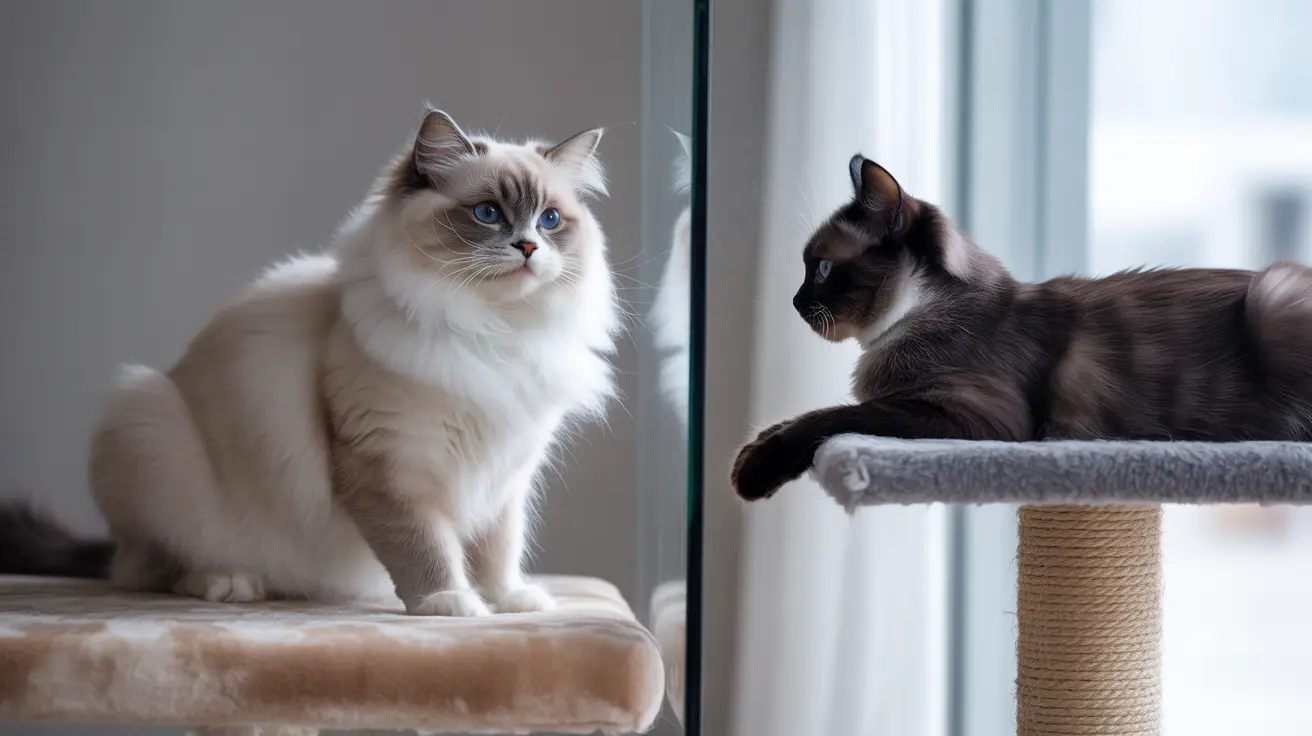Living with feline leukemia virus (FeLV) poses significant challenges for both cats and their owners. One of the most pressing concerns is whether FeLV-positive cats can safely coexist with healthy felines. This comprehensive guide explores the risks, precautions, and management strategies for households considering or currently housing both FeLV-positive and negative cats.
Understanding the complexities of this situation is crucial for making informed decisions about your cats' living arrangements and ensuring the best possible outcome for all felines involved.
Understanding FeLV Transmission Risk
Feline leukemia virus spreads primarily through close contact between cats. The virus is mainly present in saliva, making activities like grooming, sharing food bowls, and fighting particularly risky. Mother cats can also transmit the virus to their kittens during pregnancy or through nursing.
While the virus doesn't survive long outside a cat's body - typically just a few hours - the risk of transmission within a household setting remains significant due to the frequent interactions between cats sharing the same space.
Housing Options and Separation Strategies
Veterinary experts generally recommend keeping FeLV-positive cats separate from uninfected cats. This separation can be achieved through dedicated rooms or spaces within the home, ensuring minimal contact between affected and healthy cats.
If complete separation isn't possible, implementing strict management protocols becomes essential. This includes maintaining separate feeding stations, litter boxes, and resting areas for FeLV-positive and negative cats.
Vaccination and Prevention Measures
While vaccination against FeLV exists, it's important to understand that no vaccine offers 100% protection. However, vaccinating FeLV-negative cats can provide an additional layer of security if they must live with an infected cat.
Regular testing, especially for new cats entering the household, remains crucial. Adult cats generally have better natural resistance to the virus, but young kittens are particularly vulnerable and require extra precautions.
Managing a Mixed-Status Household
For households that choose to keep both FeLV-positive and negative cats, implementing strict protocols is essential:
- Maintain separate feeding and water stations
- Use different litter boxes for infected and uninfected cats
- Monitor all cats closely for signs of illness
- Schedule regular veterinary check-ups
- Keep infected cats indoors to prevent spread to outdoor cats
Long-term Health Considerations
FeLV-positive cats typically have shorter life expectancies, with most living 2-3 years after diagnosis. However, some cats, particularly those infected as adults, can live much longer with proper care and management.
Regular health monitoring becomes crucial as FeLV-positive cats are more susceptible to secondary infections and other health complications. Early intervention and proper medical care can significantly improve their quality of life.
Frequently Asked Questions
Can a cat with feline leukemia (FeLV) safely live with other cats in the same household?
While possible, it's not recommended without proper precautions. The safest approach is maintaining physical separation between FeLV-positive and negative cats. If separation isn't possible, strict management protocols and vaccination of negative cats are essential.
What precautions should I take if I want to keep an FeLV-positive cat with FeLV-negative cats?
Key precautions include vaccinating negative cats, maintaining separate feeding stations and litter boxes, minimizing direct contact, and ensuring regular veterinary check-ups for all cats.
How is feline leukemia virus transmitted between cats in a multi-cat home?
FeLV primarily spreads through close contact, especially through saliva during grooming, fighting, or sharing food bowls. The virus can also transmit through urine and, less commonly, through feces and blood.
Does vaccinating FeLV-negative cats protect them from infection when living with an FeLV-positive cat?
While vaccination provides significant protection, it's not 100% effective. Vaccines should be used as part of a comprehensive management strategy, not as the sole preventive measure.
What are the risks and expected health outcomes for cats living with FeLV-positive cats?
Uninfected cats risk contracting FeLV through prolonged exposure. FeLV-positive cats typically have shortened lifespans and are more susceptible to secondary infections, cancers, and other health complications.
Conclusion
While housing FeLV-positive cats with uninfected cats presents significant challenges, it's possible with proper management and precautions. The key lies in understanding the risks, implementing strict protocols, and maintaining regular veterinary oversight. Whether choosing to separate or integrate affected cats, the focus should always be on maintaining the best possible quality of life for all felines involved.






